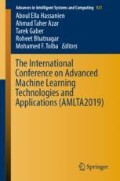Abstract
High Performance Computing (HPC) systems play an important role in advancing scientific research due to a significant demand for processing power and speed grows. In practice, HPC systems are in the spot of interest of different businesses which account on this growing technology. The growing complexity of the HPC systems made it exposed to a great range of performance anomalies. Permanent management of such systems health has a huge impact financially and operationally. Several machine learning techniques can be used to identify these performance anomalies in such complex systems. This study compares the most commonly used three supervised machine learning algorithms for anomaly detection. We had applied these algorithms on the Fundación Pública Galega Centro Tecnolóxico de Supercomputación de Galicia (CESGA) memcpy metrics which is a benchmark used to measure memory performance for each CPU socket. Our study shows that Neural Network algorithm had the highest accuracy (93%), KNN algorithm had the highest value of precision (0.97), Gaussian Anomaly Detection algorithm had the highest value of recall (0. 99), and Neural Network algorithm had the highest value of F-measure (0.96).
Access this chapter
Tax calculation will be finalised at checkout
Purchases are for personal use only
References
Tuncer, O., et al.: Diagnosing performance variations in HPC applications using machine learning. In: International Supercomputing Conference. Springer (2017)
Sorkunlu, N., Chandola, V., Patra, A.: Tracking system behavior from resource usage data. In: IEEE International Conference on Cluster Computing (CLUSTER). IEEE (2017)
Garg, S.K., Versteeg, S., Buyya, R.: SMICloud: a framework for comparing and ranking cloud services. In: Fourth IEEE International Conference on Utility and Cloud Computing (UCC). IEEE (2011)
Kumar, N., Agarwal, S.: QoS based cloud service provider selection framework. Res. J. Recent Sci. (2014). ISSN 2277-2502
Ibidunmoye, O., Hernández-Rodriguez, F., Elmroth, E.: Performance anomaly detection and bottleneck identification. ACM Comput. Surv. (CSUR) 48(1), 4 (2015)
Shipmon, D.T., et al.: Time series anomaly detection; detection of anomalous drops with limited features and sparse examples in noisy highly periodic data. arXiv preprint arXiv:1708.03665 (2017)
Ahmad, S., Purdy, S.: Real-time anomaly detection for streaming analytics. arXiv preprint arXiv:1607.02480 (2016)
Peiris, M., et al.: PAD: performance anomaly detection in multi-server distributed systems. In: IEEE 7th International Conference on Cloud Computing (CLOUD). IEEE (2014)
Cesga. http://www.cesga.es/en/. Accessed 16 Oct 2018
Seabold, S., Perktold, J.: Proceedings of the 9th Python in Science Conference (2010)
Walt, S.v.d., Colbert, S.C., Varoquaux, G.: The NumPy array: a structure for efficient numerical computation. Comput. Sci. Eng. 13(2), 22–30 (2011)
Pedregosa, F., et al.: Scikit-learn: machine learning in Python. J. Mach. Learn. Res. 12, 2825–28309 (2011)
Shyu, M.-L., et al.: A novel anomaly detection scheme based on principal component classifier. Miami Univ Coral Gables Fl Dept of Electrical and Computer Engineering (2003)
Thill, M., Konen, W., Bäck, T.: Online anomaly detection on the webscope S5 dataset: a comparative study. In: Evolving and Adaptive Intelligent Systems (EAIS). IEEE (2017)
Panchal, G., Panchal, M.: Review on methods of selecting number of hidden nodes in artificial neural network. Int. J. Comput. Sci. Mob. Comput. 3(11), 455–464 (2014)
Agrawal, S., Agrawal, J.: Survey on anomaly detection using data mining techniques. Procedia Comput. Sci. 60, 708–713 (2015)
Hodo, E., et al.: Shallow and deep networks intrusion detection system: a taxonomy and survey. arXiv preprint arXiv:1701.02145 (2017)
Acknowledgments
The European Regional Development Fund (ERDF) and the Galician Regional Government under the agreement for funding the Atlantic Research Center for Information and Communication Technologies (AtlantTIC), the Spanish Ministry of Economy and Competitiveness under the National Science Program (TEC2014-54335-C4-3-R and TEC2017-84197-C4-2-R). Finally, the authors would like to thank the Supercomputing Center of Galicia (CESGA) for their support and resources in this research.
Author information
Authors and Affiliations
Corresponding author
Editor information
Editors and Affiliations
Rights and permissions
Copyright information
© 2020 Springer Nature Switzerland AG
About this paper
Cite this paper
Halawa, M.S., Díaz Redondo, R.P., Vilas, A.F. (2020). Supervised Performance Anomaly Detection in HPC Data Centers. In: Hassanien, A., Azar, A., Gaber, T., Bhatnagar, R., F. Tolba, M. (eds) The International Conference on Advanced Machine Learning Technologies and Applications (AMLTA2019). AMLTA 2019. Advances in Intelligent Systems and Computing, vol 921. Springer, Cham. https://doi.org/10.1007/978-3-030-14118-9_67
Download citation
DOI: https://doi.org/10.1007/978-3-030-14118-9_67
Published:
Publisher Name: Springer, Cham
Print ISBN: 978-3-030-14117-2
Online ISBN: 978-3-030-14118-9
eBook Packages: Intelligent Technologies and RoboticsIntelligent Technologies and Robotics (R0)

